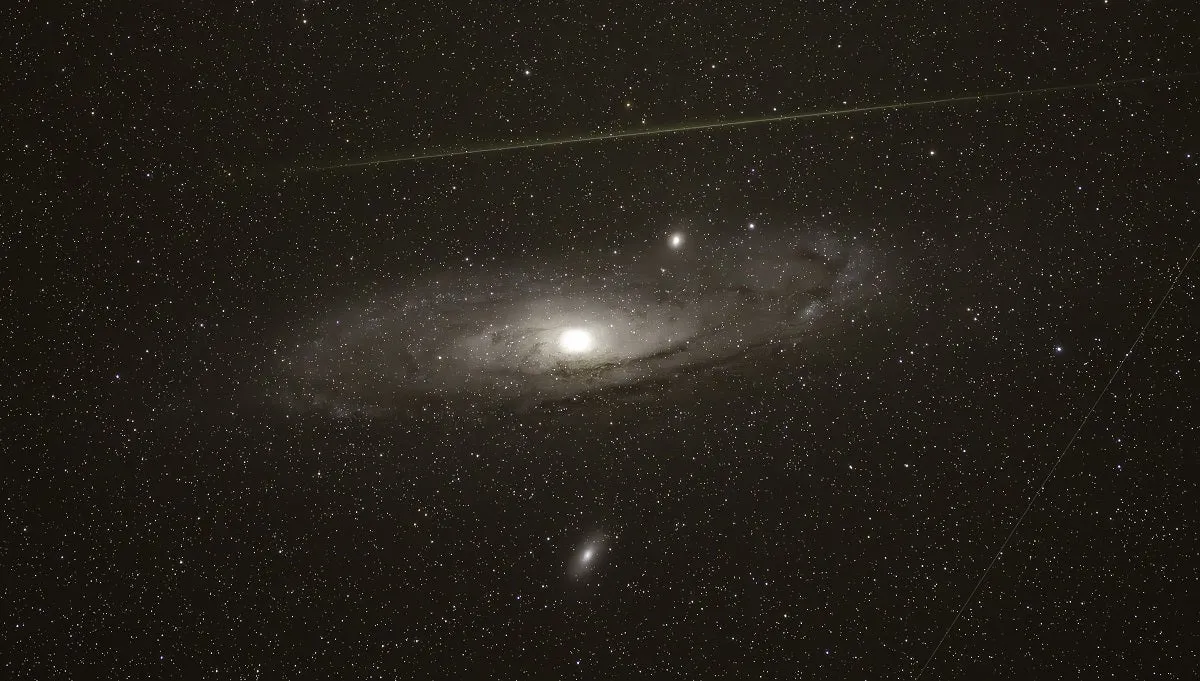
Just as the Earth keeps the Moon bound by a gravitational tether, our nearest galactic neighbor, the Andromeda galaxy (M31), is surrounded by an intriguing collection of tiny satellite galaxies. A recent study published in the journal Nature Astronomy has unveiled a peculiar pattern in the arrangement of these mini galaxies, revealing that almost all of them are clustered on one side of Andromeda and are oriented directly towards us—the Milky Way. This unique alignment raises questions about the formation and evolution of galaxies.
The findings indicate that the distribution of Andromeda's satellite galaxies is strikingly lopsided. According to the authors of the study, the odds of such an arrangement occurring by chance are estimated at just 0.3 percent. Lead author Kosuke Jamie Kanehisa from the Leibniz Institute for Astrophysics Potsdam in Germany explained to Space.com that M31 is the only known system exhibiting such a significant degree of asymmetry.
Current cosmological theories suggest that large galaxies form through the merging of smaller galaxies over time. This complex process is influenced by dark matter haloes, which are clusters of invisible material believed to account for 85 percent of the universe's mass. These haloes exert gravitational forces that help draw galaxies together. Typically, this chaotic process results in a random distribution of satellite galaxies orbiting their host galaxy. However, Andromeda's situation appears to defy this expectation.
In total, Andromeda has 37 known satellite galaxies, and astonishingly, all but one of them are located within 107 degrees of a line pointing directly at the Milky Way. Even more surprising is that half of these satellites orbit within the same plane, reminiscent of how the planets in our own Solar System revolve around the Sun.
To comprehend the improbability of this configuration, astronomers utilized standard cosmological simulations that replicate the process of galaxy formation over time. When comparing these simulations to actual observations of Andromeda, the researchers found that less than 0.3 percent of simulated galaxies similar to Andromeda displayed comparable asymmetry, with only one instance coming close to such an extreme arrangement.
One possible explanation for the peculiar clustering of Andromeda's satellite galaxies is that there may be numerous dwarf galaxies surrounding Andromeda that remain undetected, leading to an incomplete understanding of the satellites' distribution. Additionally, the existing data on visible satellites may not accurately reflect their true arrangement. Kanehisa also speculated that Andromeda's unique evolutionary history could play a role. The current unstable configuration of M31's satellites may suggest that many of them have only recently fallen into orbit due to a major merger event that Andromeda experienced approximately two to three billion years ago.
The most provocative implication of these findings is that the standard cosmological model may require refinement. Given that we have limited data on satellite galaxies throughout the universe—due to their vast distances and the overwhelming brightness of their host galaxies—it raises the possibility that the arrangement of Andromeda's dwarf galaxies may not be as anomalous as it appears. Kanehisa emphasized that it is premature to conclude that similar extreme systems do not exist elsewhere in the cosmos or that they are exceedingly rare.
While it is too early to draw definitive conclusions, one thing is clear: more observations and data are essential, not only for understanding Andromeda's satellites but also for studying the satellites of more distant galaxies. Expanding our knowledge in this area may provide critical insights into the formation and evolution of galaxies across the universe.
For more information about space exploration and discoveries, check out our latest articles, including one featuring an AI identifying potential planets that could host life.